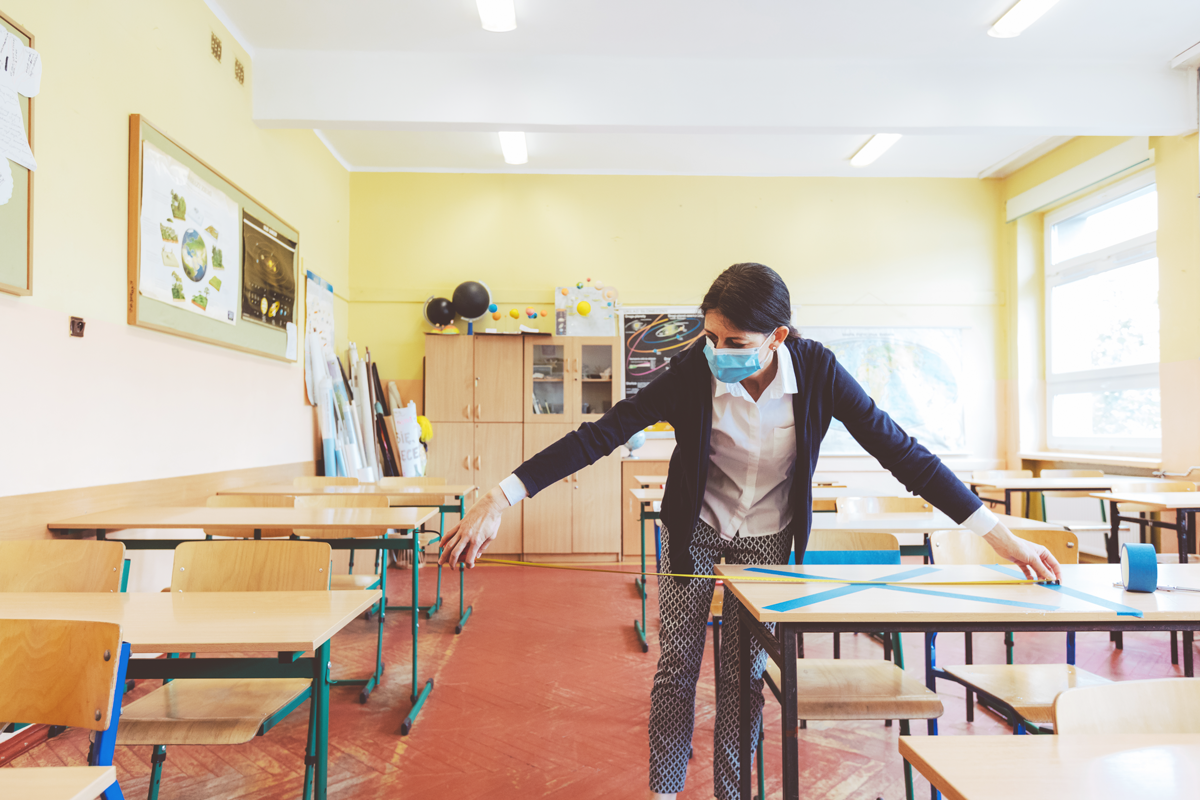Representing local districts was Oakland Unified School District Superintendent Kyla Johnson-Trammel. The Oakland USD student body is 67 percent Latino or African American, while 77 percent of the student population receives free or reduced-price meals, 3,000 are newcomers, 1,000 are unhoused students and about half of the students speak a language other than English at home. Johnson-Trammel pointed to the strengths of such a diverse student body and said it contributes to a robust education for all students. “However, in the midst of a pandemic, you can imagine the great and stark inequities and how they play out in some of our more affluent aspects of the ecosystem to some of our most vulnerable populations.”
In some of Oakland’s elementary schools, 80 to 90 percent of parents have lost their jobs during the COVID-19 pandemic. While learning is a priority for many of these families, Johnson-Trammel said the stress and trauma that comes from trying to make sure there is food in the house and that basic needs are met introduces a level of uncertainty and anxiety that is especially concentrated in some schools. The district is currently concentrating on continued meal distribution, figuring out how to get devices and internet access to students and families still in need, and setting up basic infrastructure and conditions around teachers to provide virtual instruction. The district is receiving feedback and data from teachers’ experiences thus far to improve the quality of distance learning. “I think virtual learning is here to stay, even beyond this crisis,” Johnson-Trammel said.
State Board of Education President Linda Darling-Hammond said that the number one priority is to close the digital divide. As many as half a million student households are still lacking connectivity, a recipe that doesn’t work for children going back to blended learning environments. “We need to reinvent schools in California in a way that continues the march to greater equity that was begun with the Local Control Funding Formula, and we are in danger of losing momentum in this moment of heightened inequality,” she said.
Darling-Hammond said using and building on the skills that teachers and students have been acquiring to engage with technology can help to rethink the way teaching and learning happen in the classroom. Technologies can be used “for inquiry and research in powerful ways that drive a curriculum that is much more projective of the kinds of skills kids will need in the 21st-century economy,” she said.
Darling-Hammond also emphasized the importance of all teachers using social-emotional learning and trauma-informed practices, pointing to the community school model as particularly adept in that area.
Stanford economic researcher Eric Hanushek expressed worry that there seems to be little focus on education itself, aside from whether schools will open. “This cohort in schools today will, according to history, suffer 3-6 percent loss of income over their entire lifetime,” he said. “That is a number that takes into account if we get schools back and running immediately in the fall.”
Hanushek pointed to the achievement gap that hasn’t moved in 50 years and advised that this opportunity could be used to think differently about education and employ more individualized instruction. To effectively address learning loss, the group agreed that diagnostic assessments will be needed to identify where children are and to meet them there. Darling-Hammond discussed using the resources from the Smarter Balanced interim assessments that delve into specific areas of study and said more information would be available in guidance being developed by the California Department of Education.
Nuts and bolts of opening schools
Johnson-Trammel emphasized the need for flexibility while planning for the reopening of schools. “We are planning for conditions that will continue to shift,” she said. “It requires folks to lean into their adaptive leadership and get more comfortable with the unknown.”
Oakland is currently planning for both in-person, blended learning and full distance learning instruction for student who might need it. The district is considering the needs of younger learners and perhaps providing them with more in-person instruction, as well as determining how to define the most vulnerable students in terms of being able to offer more in-person instruction. Stakeholder committees are set up in different areas of concern to hear ideas, feedback and help to think through scenarios.
Trammel-Johnson said the district is also considering different staffing models to build on teachers’ individual strengths. For example, she proposed using teachers who are strongest in building connections with students to support their social-emotional needs; and teachers who are strongest in curriculum to teach subjects. She said both students and adults will need supports devoted to mental and emotional well-being more than ever. “That comes at a cost,” she said, referring to the need for more significant federal aid.
Darling-Hammond echoed those sentiments. “To be completely transparent, the question about how we restart schools in California is going to have a great deal to do with what happens in Washington, DC, in the next couple weeks as the HEROES Act makes its way through the Senate,” she said. “There has been very little allocation of funds in the recovery package to education — far less than 1 percent of the CARES Act.”





